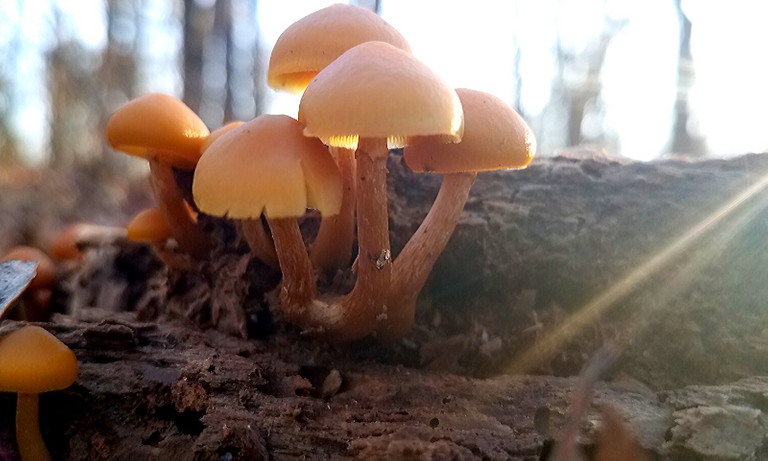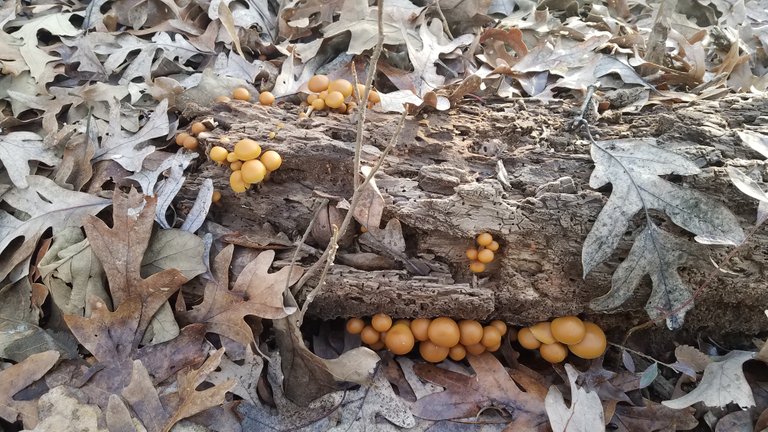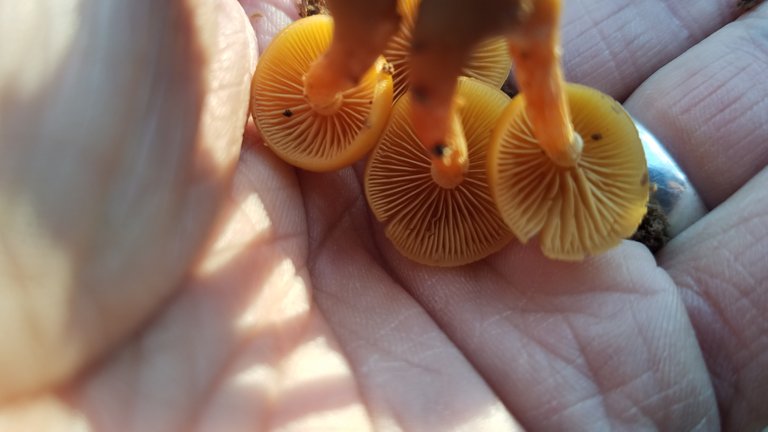*Galerina margenata* - The Deadly Galerina
Galerina margenata
.png)
Image is my own
On a recent stroll through the forest, I took a some pictures of a few different types of fungi that I wanted to identify and research. Of all the photos, I think the above image was my favorite, so it is the one that I started with.
When I first saw these from a distance, I thought that they resembled images that I have seen of an edible type of mushroom from the genus Armillaria. Now, I have never personally identified honey mushrooms before, so at no point did I even consider making a meal out of my find... and it's a good thing, because they ended up being something entirely different: the deadly Galerina!
Deadly Beauties

Image is my own
Galerina margenata
G. margenata is a very widely distributed mushroom found throughout North America and even as far south as Mexico and Australia. It is a saprobic fungus, growing predominately on the wood of conifers. Saprobic fungi have the ability to break down cellulose and lignin, so they are usually found on rotting wood. G. margenata typically grows in clusters on tree stumps or rotting logs. On occasion, it may appear to be growing up out of the grass, but it will actually be growing from buried wood.Toxicity
I am just learning how to identify fungi on my own, so I haven't studied many different species in person, but this has been the first mushroom that I've found and identified that can be deadly; hence the moniker 'funeral bell'. The fact that it bore a resemblance to an edible species (at least to my untrained eye) really drove home how foolish it is to eat any wild mushroom if you are not 100% sure of its identity.G. margenata contains a class of toxic chemicals called amatoxins; the same chemicals that make the infamous death cap (Amanita phalloides) so deadly. Amatoxins cause cellular necrosis by disrupting protein synthesis within the cell. It does this by binding to and disabling RNA polymerase enzymes responsible for the production of mRNA.
The first organs affected are usually the GI tract because they require the highest rate of protein synthesis. As such, the first symptom of amatoxin poisoning is usually vomiting. Next, the toxins begin to attack the liver and kidneys, followed by death if treatment isn't received promptly.

Image is my own
Identification
As mentioned before, I am just learning how to identify mushrooms on my own; which is to say, with the exception of a couple of species, I can't really identify mushrooms on my own. For this one, I turned to the Arkansas Mushrooms and Fungi Facebook group and local expert Jay Justice.The caps of these mushrooms can range in diameter from about 2.5 to 6.5 cm in diameter. They are smooth and start out with a conical shape, but begin to flatten out over time. The color can range from honey yellow to tawny brown. Early on, [the gills are covered by a white colored partial veil. Once the cap opens up, the gills appear to be crowded with shorter gills intermittent between the longer ones. The gills attach to the the stem, which will bear the white remnants of the partial veil. A spore print shows up as a rusty brown color, which will imbue the gills with color.
In Conclusion
These beautiful little fungi made for a wonderful addition to my nature walk. But, it wasn't until after I got home, nailed down an identity, and began my research that I began to realize how cool these mushrooms are. It is amazing to me that something so small and unassuming can be deadly. The world of fungi is a strange one, indeed, and I am eager to continue learn more about it.
Ohh never ever pick anything you are not 100% sure!
Those are super cute tough. Happy Fungifriday :)
Indeed! There are only a couple of species that I feel comfortable identifying, so far. I'm trying to focus on learning one at a time.